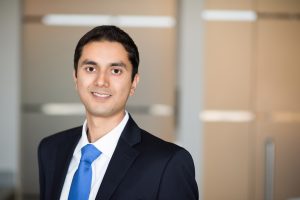The new Director of the U.S. Patent and Trademark Office, John Squires, has quickly signaled a shift in how the USPTO will address subject matter eligibility for AI and other emerging technologies. Director Squires used a routine patent signing ceremony to send a broader message on subject matter eligibility: that the USPTO remains open to granting patents on innovations in new technological fields. One of the two newly issued patents he signed involved distributed ledger/cryptocurrency technologies. When signing the patent, Director Squires invoked Samuel Morse’s groundbreaking telegraph patent claim, which was upheld by the Supreme Court as patent eligible. He stated that Morse’s telegraph “reminds us that applied technologies are foundational and form the backbone of America’s growth . . . . From crypto and AI, to quantum computing and diagnostics, the marketplace presents breathtaking opportunities for invention and investment. Who knows what tomorrow will bring? What I do know is that these are applied and patent-eligible technologies driving the frontiers of knowledge.”
Reversal of PTAB AI Ineligibility Decision
Following this announcement, Director Squires took the unusual step of convening a new panel to review an earlier Patent Trial and Appeal Board (PTAB) decision in Ex parte Guillaume Desjardins et al. that held claims of an artificial intelligence patent application patent ineligible under Section 101. The newly convened panel included key decision makers across the Patent Office, including Director Squires, Acting Commissioner of Patents Wallace, and Vice Chief Administrative Patent Judge Kim.
The claims at issue in Desjardins were directed to training the same instance of a machine learning model on multiple tasks to optimize performance of the machine learning model on such multiple tasks. Director Squires noted the specification discloses the claimed approach was a technical improvement:
By training the same machine learning model on multiple tasks as described in this specification, once the model has been trained, the model can be used for each of the multiple tasks with an acceptable level of performance.
Relying on Enfish, LLC v. Microsoft Corp., 822 F.3d 1327 (Fed. Cir. 2016), Director Squires wrote that the claims at issue recite “improvement to how the machine learning model itself operates,” and are thus patent eligible.
Director Squires further suggested the “overbroad reasoning” of the original Board panel was “troubling” because “categorically excluding AI innovations from patent protection in the United States jeopardizes America’s leadership in this critical emerging technology. Yet, under the [previous] panel’s reasoning, many AI innovations are potentially unpatentable—even if they are adequately described and nonobvious—because the panel essentially equated any machine learning with an unpatentable ‘algorithm’ and the remaining additional elements as ‘generic computer components,’ without adequate explanation. Examiners and panels should not evaluate claims at such a high level of generality.”
Director Squires concluded that Section 102 (novelty), Section 103 (obviousness), and Section 112 (written description, definiteness, and enablement) standards “are the traditional and appropriate tools to limit patent protection to its proper scope.” As a result, “[t]hese statutory provisions should be the focus of examination.”
Key Takeaways for Patent Applicants
- Director Squires will likely direct USPTO examiners and PTAB panels to be more judicious in rejecting claims as ineligible under Section 101, particularly in the field of AI.
- Applicants should continue to describe the details of technical problems being solved and resulting improvements to the operation of the disclosed AI technology and/or operation of a computer in the specification. The disclosure in the specification can rebut an assertion of subject matter ineligibility.
- With Director Squires’ confirmation, now is likely a good time to file fast track (Track 1) applications on AI innovations to increase your chances of obtaining a patent without the heightened Section 101 hurdles experienced in the past few years.

